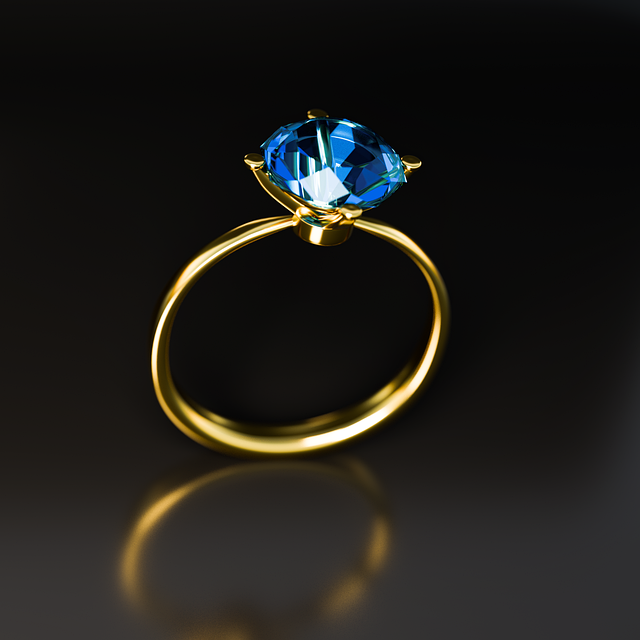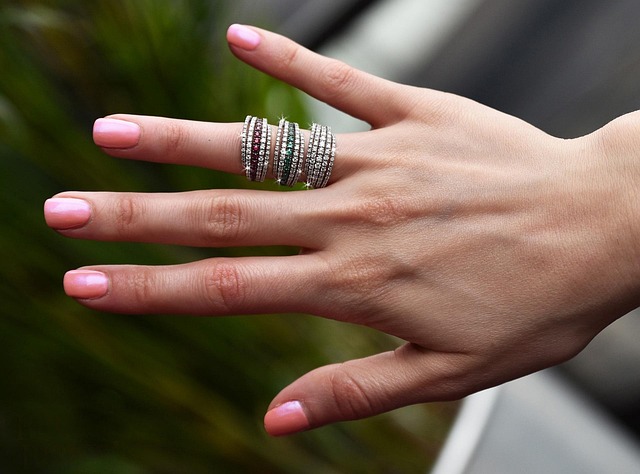Selling loose diamonds can be highly profitable, but understanding the complex ecosystem and identifying reputable diamond buyers is crucial. The 4 Cs—cut, clarity, color, and carat weight—determine a diamond's worth. Accessibility of loose diamonds allows quicker evaluations and appraisals, facilitating direct engagement with diamond buyers for better negotiation and higher prices. Researching diamond buyers, documenting diamond quality precisely, and obtaining certified appraisals streamline the sales process and maximize returns.
Are loose diamonds easier to sell? In today’s market, understanding the dynamics of the diamond trade is key for both sellers and buyers. This article explores the unique advantages of selling loose diamonds, delving into factors that enhance salesability. We navigate the process by guiding you through finding reputable diamond buyer services, assessing quality, and mastering best practices for a seamless transaction. By the end, you’ll be equipped with insights to maximize your diamond sale.
- Understanding the Diamond Market: Factors Affecting Salesability
- The Advantages of Loose Diamonds for Sellers
- Navigating the Process: Finding the Right Diamond Buyer
- Assessing Quality and Pricing: What Buyers Look For
- Ensuring a Smooth Sale: Tips and Best Practices
Understanding the Diamond Market: Factors Affecting Salesability

The diamond market is a complex ecosystem where various factors influence the salesability of loose diamonds. When considering if these untied stones are easier to sell, it’s crucial to explore the dynamics at play. First and foremost, the reputation of the source plays a significant role; diamonds sourced ethically and certified by renowned organizations hold higher value in the eyes of diamond buyers. These buyers, often professional dealers or collectors, seek transparency and authenticity, making reputable origins essential for top-tier sales.
Additionally, the cut, clarity, color, and carat weight (the 4 Cs) determine a diamond’s beauty and worth. Diamond buyers assess these characteristics meticulously as they directly impact the stone’s brilliance and overall appeal. While loose diamonds offer the advantage of customizable settings, they may also present challenges in terms of marketing and reaching potential customers compared to mounted jewelry. However, with the right strategies and access to a network of discerning diamond buyers, selling loose diamonds can be highly lucrative.
The Advantages of Loose Diamonds for Sellers

When considering a sale, loose diamonds offer several advantages to sellers. One of the primary benefits is accessibility; these uncut or raw gems can be easily evaluated and appraised by potential diamond buyers, ensuring a quicker sales process. This is particularly advantageous for sellers who want a swift transaction, whether it’s due to financial needs or personal circumstances.
Additionally, loose diamonds provide a certain level of transparency in the market. Sellers can directly engage with diamond buyers, allowing for better negotiation and potentially securing higher prices based on the quality and rarity of their stones. This direct approach also means sellers have more control over the sales process, enabling them to make informed decisions about when and how to sell their precious gems.
Navigating the Process: Finding the Right Diamond Buyer

Navigating the process of selling loose diamonds can be daunting, but finding the right diamond buyer is crucial for a successful and stress-free transaction. The first step is to identify reputable buyers who specialize in purchasing loose stones. Many jewelry stores offer buying services, but it’s essential to choose an expert with a proven track record and fair pricing. Online platforms have also made it easier to connect with diamond buyers, allowing you to compare offers from various sources.
When considering a diamond buyer, look for their expertise, the range of products they accept, and their reputation in the industry. Researching their background and reading customer reviews can provide valuable insights into their reliability and trustworthiness. Remember, selling loose diamonds requires careful evaluation, so ensuring you have a transparent and trustworthy partner is key to a positive experience.
Assessing Quality and Pricing: What Buyers Look For

When assessing diamonds for sale, understanding what buyers seek is paramount. Diamond buyers are keen observers of quality and value. They examine four primary attributes: clarity, cut, color, and carat weight—often referred to as the 4 Cs. High-quality diamonds, with minimal inclusions (flaws) visible to the naked eye, command higher prices. A well-cut diamond maximizes its brilliance and sparkle, enhancing its overall attractiveness. Color grades range from colorless to yellow or even pink, with rarer colors commanding premium prices. Carat weight is a measure of size, but it’s important to note that larger diamonds are not always more valuable; their price depends on the other 3 Cs as well.
In addition to these factors, buyers consider certifications from reputable labs like GIA (Gemological Institute of America), which guarantee a diamond’s authenticity and quality. Reputable diamond buyers also look for a transparent and ethical supply chain, ensuring peace of mind for purchasers. This includes understanding the origin of the diamond, its previous ownership, and any associated paperwork or documentation. All these elements play a significant role in determining fair market value and facilitating easier sales transactions.
Ensuring a Smooth Sale: Tips and Best Practices

When selling loose diamonds, ensuring a smooth transaction is paramount to maximize your returns. One of the first steps to consider is choosing a reputable diamond buyer known for their integrity and fair pricing. Researching their background and reading customer reviews can help you make an informed decision, safeguarding against potential scams or lowball offers.
Next, carefully document the quality and specifications of each diamond. This includes providing detailed descriptions of their cut, clarity, color, and carat weight—the four Cs that determine a diamond’s value. Accurate documentation facilitates accurate appraisals, ensuring you receive fair market value for your diamonds. Additionally, having certified appraisals from trusted sources can greatly facilitate the sales process, making it easier to find a diamond buyer willing to meet your asking price.
When considering whether loose diamonds are easier to sell, it’s clear that understanding the market dynamics is key. By leveraging the advantages of uncut diamonds, such as their unique appeal to specialized buyers and potential for higher profits, sellers can navigate the process effectively. Finding the right diamond buyer, assessing quality and pricing, and following best practices ensure a smooth sale. Remember, with the right approach, loose diamonds can be a valuable asset, attracting discerning collectors and investors alike.
